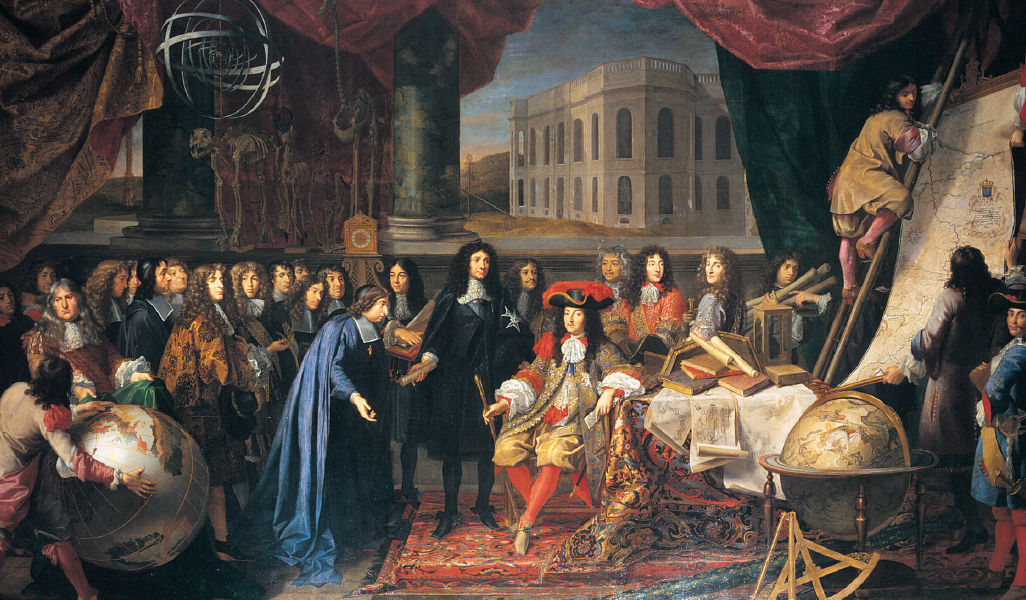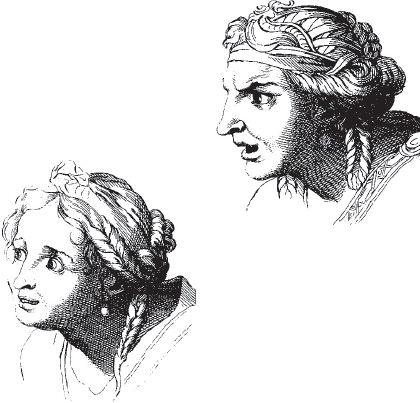Science and Music
Various aspects of Baroque music reflect the new scientific attitudes that developed in the seventeenth century. Scales were tuned, or tempered, more exactly than ever before, so that for the first time all the twenty-four major and minor keys were available to composers. Their interest in exploring this resource is evident from collections such as Bach’s The Well-Tempered Clavier, containing preludes and fugues in every key. Harmony was systematized so that chords followed one another in a way that seemed to have a new, logical direction guiding it.

The Age of Absolutism and the Age of Science converge in this painting of Louis XIV founding the Academy of Sciences. Bridgeman-Giraudon/Art Resource, NY.

The emotions of Hope and Fear, as represented in a Baroque scientific treatise. Like composers of the time, the artist felt that feelings could be isolated and depicted in the abstract.
Regularity became the ideal in rhythm, and in musical form — the distribution of sections of music in time — we find a tendency toward clearly ordered, even schematic plans. Whether consciously or not, composers seem to have viewed musical time in a quasi-scientific way. They divided it up and filled it systematically, almost in the spirit of the landscape architects who devised Baroque formal gardens.
In the important matter of musical expression, too, science was a powerful influence. Starting with the French philosopher-mathematician René Descartes, thinkers sought to apply the new rational methods to the analysis and classification of human emotions. It had always been felt that music had a special power to express and arouse emotions. Now it seemed that there was a basis for systematizing — and hence maximizing — this power.
Thus scientifically inclined music theorists made checklists of musical devices and techniques corresponding to each of the emotions. Grief, for example, could be projected by a specific kind of melodic motive and a specific kind of rhythm — even by a specific key. By working steadily with these devices and saturating their pieces with them, composers assumed they could achieve the maximum musical expressivity.

